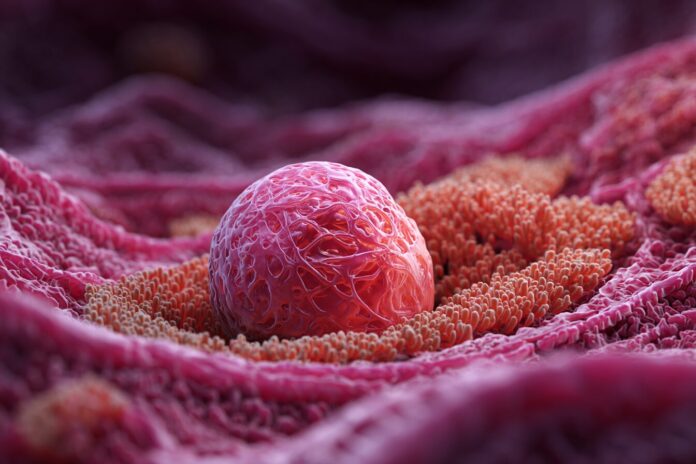A New Era in Human Development Research
In a groundbreaking milestone, scientists have vividly captured the process of a human embryo implanting – an event that was previously concealed within the depths of the uterus. This breakthrough is revolutionizing our understanding of human reproduction by unveiling one of nature’s most discreet and critical steps.
Most importantly, the use of advanced imaging and laboratory techniques has opened a new window into early developmental stages. Because the methodology provides continuous real-time data, researchers can now study dynamic cellular interactions that were only speculated about before. In addition, this achievement instills hope for improved fertility treatments and a deeper understanding of early pregnancy loss.
How Was the Film Made?
To document this elusive process, an international team based in Barcelona developed an innovative laboratory model that replicates the uterine environment. They employed a collagen-rich gel that mimics the uterine lining, allowing the embryo to interact with the medium in a way that closely resembles its natural setting. Because the in vivo conditions are complex, creating such a model was a feat in itself.
Besides that, the researchers integrated time-lapse imaging and 3D color microscopy to record the embryo’s journey. Every 20 minutes, the system captured high-resolution images over a span of 24 hours, which were then knitted together into a continuous film. Therefore, even the most transient movements and micro-dynamics of the 5-day-old embryo were preserved for detailed analysis. More details on the imaging approach can be found in the UPI report on this breakthrough.
Unseen Dynamics: What Happens During Implantation?
Preceding studies mostly relied on animal models that provided only a superficial understanding of implantation. However, the new real-time footage demonstrates that a human embryo actively burrows into the uterine tissue rather than merely attaching itself. Most importantly, the study reveals that implantation is far more dynamic than previously understood due to the embryo’s active movements and invasive forces.
Because the embryo engages in powerful, almost mechanical digging actions, these revelations challenge long-held beliefs. The time-lapse recordings clearly illustrate that the process occurs in under 24 hours, and molecular interactions along with forceful tissue remodeling are vital. For those interested in comparative biology, refer to insights shared by Nature on the subject.
Implications for Fertility Treatments
Since implantation failure is a leading cause of pregnancy loss, this study holds significant promise for the field of reproductive medicine. Most importantly, understanding the exact sequence of molecular events during implantation can lead to more effective diagnostics and interventions for infertility. The clarity provided by these images is expected to set the stage for targeted therapies.
Moreover, the ability to observe the embryo’s intimate interaction with its environment helps researchers elucidate critical signaling pathways, such as the role of the protein L-selectin and its carbohydrate ligands. Because these interactions govern successful implantation, the new data supports the development of refined treatment protocols. Additional insights are provided by studies at UCSF, which further explain the mechanics behind embryo attachment.
The Technology Behind the Milestone
This breakthrough was made possible by the integration of state-of-the-art technology and innovative laboratory techniques. Advanced confocal microscopy allowed for precise real-time imaging, while the custom-designed collagen scaffolds simulated the intricate features of the uterine lining. Most importantly, this combination of technologies opened up an elusive area of research that was once considered inaccessible.
Because each frame of the time-lapse series captured minute changes in the embryo’s trajectory, scientists could observe how the embryo not only positions itself but also actively modifies its environment. Therefore, these technical advancements have reshaped our perspective on early embryonic movements and shed light on previously unobserved cellular behaviors. Interested readers can also view related research from Caltech which explores embryo-like models further.
Ethics and Ongoing Research
It is imperative that such advanced research is conducted under strict ethical standards. The embryos used in these experiments were donated specifically for research purposes, and the study was executed under comprehensive ethical oversight. Most importantly, researchers maintained a careful balance between scientific inquiry and ethical responsibility.
Because this research is performed in carefully controlled laboratory conditions rather than in vivo, there is a reduced risk of adverse effects. Besides that, the development of such ethical protocols reinforces the importance of transparency and responsibility in modern biomedical research. Continuous studies are expected to explore gene editing and environmental impacts in similar models, promising new insights into pregnancy development and potential therapeutic interventions.
Future Prospects: A Window Into Early Human Life
The ability to observe the implantation process in isolation offers unprecedented opportunities to understand early human development. Most importantly, it provides a critical foundation for future advances in reproductive medicine and developmental biology. Because this research fills long-standing gaps in our knowledge, it paves the way for innovative approaches to combating infertility.
Furthermore, continuous improvements in imaging and modeling will likely lead to more refined diagnostic tools and individualized treatment strategies. Transitioning from laboratory models to clinical applications could soon provide hope for couples experiencing fertility challenges. Therefore, the long-term potential of these findings is immense, driving research towards more effective and personalized medical interventions.
References
- ScienceAlert: World First – Scientists Film The Exact Moment a Human Embryo Implants
- UPI: ‘Astonishing’ video shows human embryo implanting in real time
- Nature: Watch a human embryo implant itself — with brute force
- UCSF: Scientists Discover What Makes Human Embryo Attach to Uterus
- Caltech: Scientists Create Embryo-Like Model that Mimics Post-Implantation Stage of Human Development



